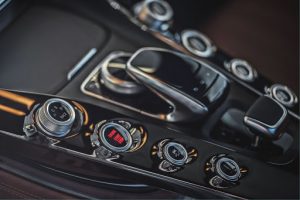Automatic Vs Manual – What’s The Difference?
There are two main types of transmission that people talk about. Automatic and manual. While we are talking transmissions, this is worth a read too Continuously Variable Transmission: What are the Pros and Cons?
Both automatic and manual transmissions challenge the power generated to the engine, into driving the wheels. While CVT is the exception here, the gearbox (transmission) is an oil-filled metal case that houses several gears, bearings, shafts and other parts. Each gear has a specific ratio which will ensure that the wheels don’t spin at the same speed as the engine.
When lined up side by side, it is pretty simple – it all comes down to personal preference though. Although it is worth noting if you learn to drive a manual you can drive manual and automatic if you go with an automatic you are limited to just automatics.

Automatic
At one point in time, automatic was considered a luxury. Although now you will find just as many automatics on the market as manuals. They used to be much more expensive, and in some car models still are. There are two types of automatic – one that is a dual-clutch automatic that relies on a par of clutches and the tradition auto transmission that is connected to the engine via a hydraulic torque converter. They both change gears without any input from the driver. In some cars, you can still manually choose gears, but most people don’t.
The simple two-pedal system is excellent for many drivers. Automatic tends to have the upper hand for a smoother driver in stop-start city traffic, and typically requires less maintenance too. A dual-clutch auto gearbox actually shirts gears in milliseconds which gives greater efficiency and performance.
Manual
To many, this is known as a stick-shift and pretty much described what it is. You will use the gearstick to change the gears. You can still see the old-style trucks with the gear stick mounted behind the steering wheel, but most often they are now in the centre console of the car.
To change the gears, the driver will need to know how to use the clutch. A clutch disc is nestled between the engine and transmission and needs to be released using the third pedal on the left of the brake. So the process will go release the clutch, select the gear, engage the clutch again. From standing still, you have the unfortunate ability to stall the car, by employing the clutch too quickly. You might also wear the discs out if you engage too slowly. Typically the driver, when getting used to driving, will learn where the bite point is, have more of a connection with their car than an automatic driver might have.
The bonus point, as mentioned before, is that a driver of a manual will be able to hire an automatic car anywhere in the world, whereas an automatic driver is limited. And, in many cases, a manual car will be cheaper to purchase as second hand too. There are some cars, like the Porsche 911 and the Chevy Corvette that offer 7 gears, and that is a driving experience worth learning manual for.